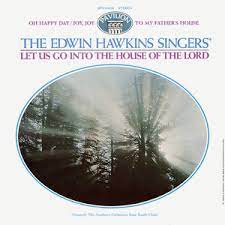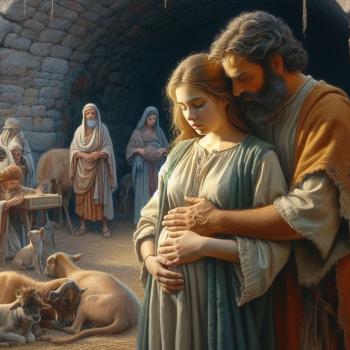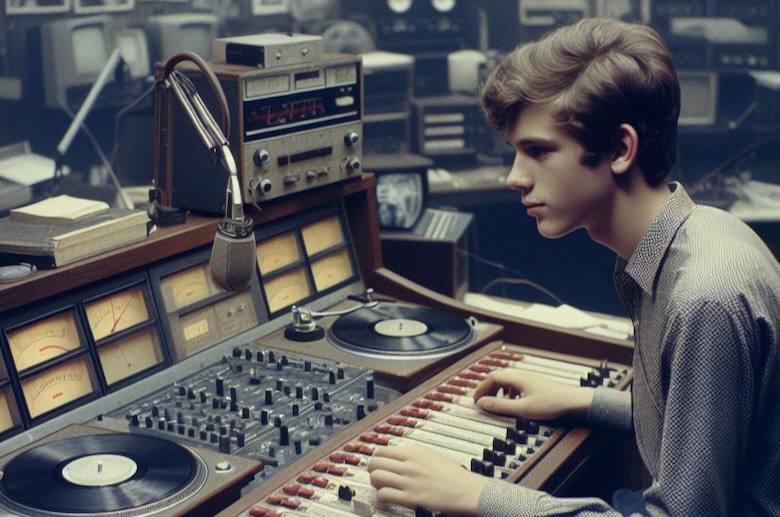
God used Contemporary Christian Music (CCM) early in my faith journey to help me memorize scripture, discover spiritual truth, learn hymns, and, most importantly, find a community among other fans. I quickly became a fan and student of the genre. I loved to read liner notes. I subscribed to CCM Magazine and hung out with the music buyer at my local Christian bookstore, which was the only place to buy the music. I collected swag and marketing materials wallpapering my walls with album flats, posters, and memorabilia.
I came to Christ at age 14, a little more than a decade after Jesus Music hit the cover of Time Magazine. The first Christian music I heard, outside of choral and sacred music, was on a homemade cassette. Mike Dyer brought Amy Grant‘s “Age to Age” on one side and her “A Christmas Album” on the other. On our annual ski retreat to Gatlinburg, Tennessee, our leaders allowed us to take turns listening to music we brought from home. After a steady diet of, I’m not kidding you, Madonna, Duran Duran, Culture Club, and Ted Nugent, my turn was next. I had left my beloved Journey and Foreigner at home. Mike offered me his cassette and I gladly accepted. Within 100 minutes, I was moved and inspired. And I had a new favorite artist.
Recently, a friend and fellow CCM lover asked me which albums I thought were the most transformative creating the genre. I instantly thought of the excellent movie, Jesus Revolution [stream | article]. A new generation and audience is learning the story of the early days of rock and roll going biblical.
My friend knows that even after 40 years, I’m still a fan. The albums I put forth as the most transformative in the genre are this fan’s opinion. You might ask artists who worked in the industry, radio professionals who spun 45s, or professionals who booked concert venues and get a completely different list.
My lone assertion is this: without these six albums, we don’t have a genre. Without these six albums, there is no industry, there are no national radio networks playing CCM, and today’s artists don’t have the influence and platform they have. Like them or hate them, consider them “in genre” or not, without these six albums, we don’t have CCM.
I’d love to hear your list. Please comment below.
“Let Us Go to the House of the Lord,” by the Edwin Hawkins Singers (1968)
Edwin Hawkins took an 18th-century English hymn and turned it on its head to become one of the most iconic and recognizable songs in the history of recorded music. The simple recording made in the Ephesian Church of God exploded onto the charts all over the world in 1969 and won a Grammy. Note for recording geeks: Dorothy Combs Morrison’s lead vocal is on the left channel only which makes the explosion into the chorus even more effective.
This recording is more important than The Byrds, “Turn, Turn, Turn.”
Listen to the entire album for some mindblowing music.
Key Lyrics
He taught me how (Oh, he taught me how)
To watch and fight and pray
Watch and pray
And live rejoicing every day
Every day
Defining Song
“Oh, Happy Day”
“Only Visiting This Planet,” by Larry Norman (1972)
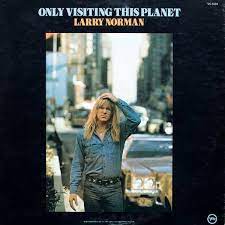 Christian artists have been trying to be as honest and raw as Norman’s release during the height of Jesus Music. They can’t because the Musical Industrial Complex won’t let today’s artists talk bluntly and openly about venereal disease, taking drugs, having extramarital sex, and breaking the law. Norman set the bar for the entire industry to come.
Christian artists have been trying to be as honest and raw as Norman’s release during the height of Jesus Music. They can’t because the Musical Industrial Complex won’t let today’s artists talk bluntly and openly about venereal disease, taking drugs, having extramarital sex, and breaking the law. Norman set the bar for the entire industry to come.
In the oft-quoted and covered song, he sings, “I want the people to know that He saved my soul but I still like to listen to the radio…. Jesus is the rock, and he rolled my blues away.”
He wasn’t about the career, the money, and the accolades even though he got them. He opened for The Who, Jefferson Airplane, The Byrds, and Jimi Hendrix. He played for President Carter and counts Bono, Paul McCartney, and Sammy Davis, Jr. among his millions of fans. Larry wanted people to get free from what was killing them and follow Jesus, warts and all.
I’m glad he’s appreciated now, but in the midst of his career, he kept writing, singing, and recording even though the mainstream music industry believed he was wasting his talent in Christian music at the same time church leaders were preaching against rock and roll and demanding that parents keep children from listening.
Key Lyrics
You got gonorrhea on Valentine’s Day
You’re still looking for the perfect lay
You think rock and roll will set you free
Oh, you’ll be deaf before your thirty-three
Shooting junk till your half insane
Broken needle in your purple vein
Why don’t you look into Jesus, He’s got the answer
From “Why Don’t You Look into Jesus”
Defining Song
“I Wish We’d All Been Ready”
“Hosanna USA Live,” by various artists (1979)
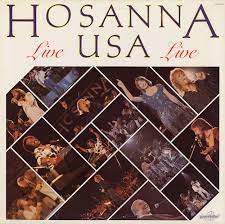 It was the who’s who of Jesus Music coming together at the mother church for a live concert emceed by Chuck Smith. The crowd was raucous and hung on every note. The band was hot and tight. And the artists brought their “A” game. Leon Patillo, formerly of Santana, kicked things off. Darrell Mansfield, who later played for Van Halen and Bon Jovi, sang next. Benny Hester, Kelly Willard, and Denny Correll brought it home.
It was the who’s who of Jesus Music coming together at the mother church for a live concert emceed by Chuck Smith. The crowd was raucous and hung on every note. The band was hot and tight. And the artists brought their “A” game. Leon Patillo, formerly of Santana, kicked things off. Darrell Mansfield, who later played for Van Halen and Bon Jovi, sang next. Benny Hester, Kelly Willard, and Denny Correll brought it home.
This was CCM’s Voyager 1 probe launched from Costa Mesa to the rest of the US.
Think about it this way: the culture had been awash in the Jesus Movement. Time Magazine had published an article, television news covered the phenomenon, thousands of “saved hippies” talked about about Jesus wherever they went, and 75,000 teenagers and college students converged on Dallas to listen to Bill Bright, Billy Graham, and the best music of the age during Explo72. Nevertheless, the genre wasn’t mainstream yet. So what does Calvary Chapel do? They create an album that many will buy, borrow, or receive as gifts that contains a gospel presentation by Chuck Smith in addition to some amazing music.
Key Lyrics
It was your giving soul that opened up my eyes
And by the grace of God I’ve given Him my life
Oh, the witness
from “The Witness” by Denny Correll
(By the way, the performance on this album rocks way more with the live band than the cut on his album, “Standin’ in the Light.”)
Defining Song
“Born Again,” by Leon Patillo
“Slow Train Coming,” by Bob Dylan (1979)
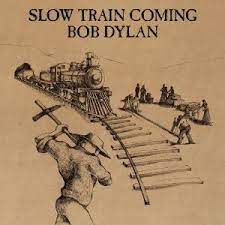 I am not a Bob Dylan fan, but I can’t argue with this album’s influence. It won a Grammy. He tackled religious themes in a raw fashion with a funk sound courtesy of great production and the famed Muscles Shoals Sound band, horns, and studio. One of the biggest and most influential artists in the world was telling others about The Bible and Jesus.
I am not a Bob Dylan fan, but I can’t argue with this album’s influence. It won a Grammy. He tackled religious themes in a raw fashion with a funk sound courtesy of great production and the famed Muscles Shoals Sound band, horns, and studio. One of the biggest and most influential artists in the world was telling others about The Bible and Jesus.
Key Lyrics
Defining Song
“Unguarded” by Amy Grant (1985)
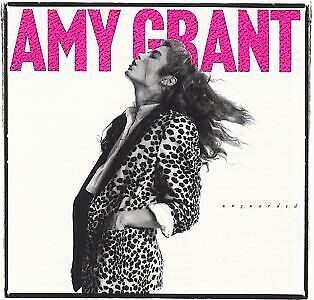 For the first time, millions of dollars were spent on an album release from songwriting to the tour merch and everwhere in between. The best songwriters and musicians gathered at Caribou Ranch, the exclusive mountain studio owned by the producer and manager of the band Chicago. CCM’s best producer, Brown Bannister, took his time and added layer after layer. It would be the first major release of “Christian Rock” through A&M Records, home to Janet Jackson, Police, Sting, and dozens of other monster groups.
For the first time, millions of dollars were spent on an album release from songwriting to the tour merch and everwhere in between. The best songwriters and musicians gathered at Caribou Ranch, the exclusive mountain studio owned by the producer and manager of the band Chicago. CCM’s best producer, Brown Bannister, took his time and added layer after layer. It would be the first major release of “Christian Rock” through A&M Records, home to Janet Jackson, Police, Sting, and dozens of other monster groups.
Myrrh Records and Word Records released four different album covers. The concert tour was booked in stadiums instead of theatres and churches. Radio promotion was gargantuan fostering enough airplay of “Find a Way” for it to chart on Billboard, the first CCM song ever to scale the mountain. Amy performed on late night television and even sang during the primetime telecast the Grammys. If social media had existed then, she would’ve gone viral for her performance. She didn’t wear any shoes.
We would not have CCM if we didn’t have “Unguarded.”
How do you pick which Amy Grant album to feature? If we didn’t have the popularity “Age to Age,” do we get “Straight Ahead” with a little MTV airplay of the video for “Angels?” The argument goes on. “Heart in Motion” set records and two tracks are still played as gold singles on Adult Contemporary radio today, but if “Unguarded” didn’t crush it, we wouldn’t have “Heart in Motion.”
Key Lyrics
I’ll be waiting.
I may be young or old and gray,
Counting the days,
I’ll be waiting,
And when i finally see you come,
I’ll run to meet you.
from “The Prodigal (I’ll Be Waiting)”
Defining Song
“(Love Will) Find a Way”
(Michael W. Smith recorded a live video in Atlanta where Amy Grant made a guest appearance. I attended that show and watched the worldwide live performance debut of the song. The next morning, mainstream DJ Steve McCoy played a bootleg recording of the song on Z-93 launching the song’s presence on Top 40 radio where it would hit #7 on the Billboard Adult Contemporary and #29 on Casey Kasem’s show where he showcased the Billboard “American Top 40.”)
“The Joshua Tree” by U2 (1987)
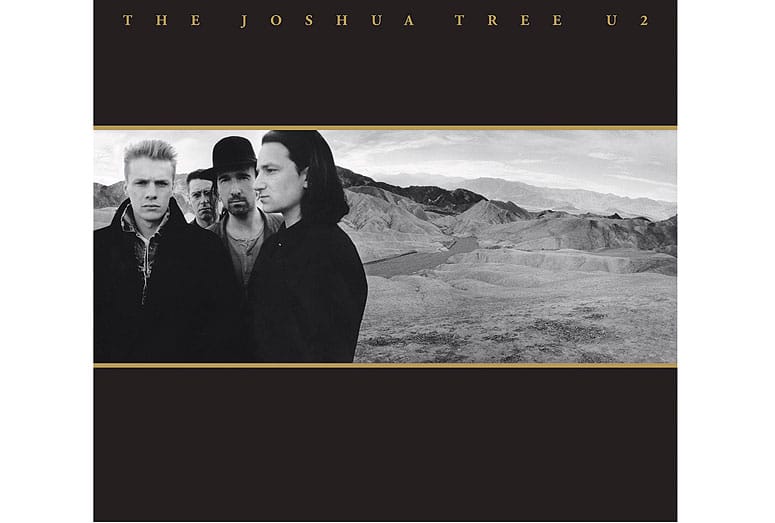 Just listen to any worship music in the last 20 years and you’ll hear The Edge’s guitar sound. The biggest rock band in the world sang about the One who “broke the bonds and you loosed the chains, carried the cross of my shame. Oh my shame! You know I believe it.” Spiritual conversation broke out everywhere. Bono talked about Jesus, salvation, and gospel hope with Presidents, news journalists, and concert audiences worldwide. And now they’re playing The Sphere in Las Vegas. This album gave legitimacy to every other artist.
Just listen to any worship music in the last 20 years and you’ll hear The Edge’s guitar sound. The biggest rock band in the world sang about the One who “broke the bonds and you loosed the chains, carried the cross of my shame. Oh my shame! You know I believe it.” Spiritual conversation broke out everywhere. Bono talked about Jesus, salvation, and gospel hope with Presidents, news journalists, and concert audiences worldwide. And now they’re playing The Sphere in Las Vegas. This album gave legitimacy to every other artist.
Key Lyrics
I wanna feel sunlight on my face
I see that dust cloud disappear without a trace
I wanna take shelter from the poison rain
Where the streets have no name, oh, oh….
And when I go there, I go there with you
It’s all I can do
From “Where the Streets Have No Name”
Defining Song
“I Still Haven’t Found What I’m Looking For”
Honorable Mentions:
“Welcome to the Real World,” by Mr. Mister (1985)
“Kyrie” caused conversations about faith and music to occur between cultural Catholics and born again Christians.
“A Liturgy, a Legacy, and a Ragamuffin Band,” by Rich Mullins (1993)
The album continues to echo today. Rich is more influential now than he was in the hot glare of his death. Of all of the CCM albums from this time, this one holds up the best due to the poetic songwriting, one-of-a-kind instrumentation, and timeless themes expressed.
“Almost There,” by MercyMe (2001)
The biggest song ever in Christian music, “I Can Only Imagine,” anchored this album and launched this group. The song went around the world and sold more copies than 2.5 million copies and has been streamed and downloaded millions more. The song is a part of Generation X’s zeitgeist, even if the person is not religious.


